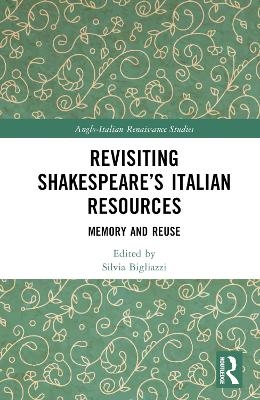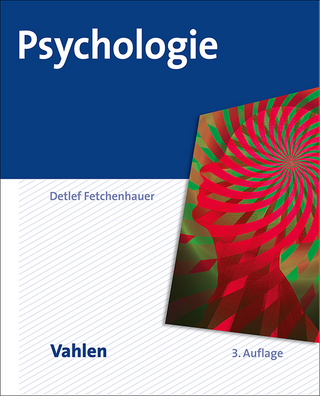
Revisiting Shakespeare’s Italian Resources
Routledge (Verlag)
978-1-032-29444-5 (ISBN)
Revisiting Shakespeare’s Italian Resources is about the complex dynamics of transmission and transformation of the Italian sources of twelve Shakespearean plays, from The Two Gentlemen of Verona to Cymbeline. It focuses on the works of Sir Giovanni Fiorentino, Da Porto, Bandello, Ariosto, Dolce, Pasqualigo, and Groto, as well as on commedia dell’arte practices. This book discusses hitherto unexamined materials and revises received interpretations, disclosing the relevance of memorial processes within the broad field of intertextuality vis-à-vis conscious reuses and intentional practices.
Silvia Bigliazzi is Professor of English Literature at Verona University, where she is the Director of the Skenè Research Centre for drama and theatre studies. Her Shakespearean publications include monographs on Hamlet (Oltre il genere. Amleto tra scena e racconto, 2001) and the experience of non-being (Nel prisma del nulla. L’esperienza del nonessere nella drammaturgia shakespeariana, 2005), as well as the co-edition of miscellanies on theatre translation (Theatre Translation in Performance, Routledge 2013), Revisiting The Tempest: The Capacity to Signify (2014), Romeo and Juliet (Shakespeare, Romeo and Juliet, and Civic Life: The Boundaries of Civic Space, 2016), and Shakespeare and Crisis (2020). In 2019 she published Julius Caesar 1935: Shakespeare and Censorship in Fascist Italy. She is the co-general editor of Skenè. JTDS, as well as of the Global Shakespeare Inverted series. She has translated into Italian Romeo and Juliet (2012) and Shakespeare’s sonnets (2023), and has received several fellowships from New York University, Cambridge, and Oxford (All Souls). She is a co-founder of the Verona Shakespeare Fringe Festival.
Acknowledgments
List of Contributors
INTRODUCTION
Silvia Bigliazzi
PARTE ONE: MEMORIES
1. “Memory, Intertextuality/Interdiscursivity and Reuse”
Savina Stevanato
2. “Whose Memory? From the “Rossignuol” to Female Communities in Groto and Shakespeare”
Silvia Bigliazzi
PART TWO: MEMORY AND REUSE
3. Welcome to Padua: Female Characters, Narrative Sources, and the Commedia dell’Arte in The Two Gentlemen of Verona
Melissa Walter
4. The Source as a Resonant Halo. Italian Neoplatonism in Twelfth Night
Rocco Coronato
5. Bandello’s Novellas and The Merry Wives of Windsor
Roberta Zanoni
6. “Ed ebbono bene e buona ventura.” Multi-Layered Echoes of Il Pecorone in The Merchant of Venice
Alessandra Squeo
7. Boccaccio’s Bernabò, Shakespeare’s Cymbeline, and Other Resources: A Keyword and Co-textual Analysis
Fabio Ciambella
PART THREE: REUSE AND MEMORY
8 “What country, friends, is this?”: Displaced Identity and Homoerotic Desire in Twelfth Night and its Italian Models
Jason Lawrence
9. “The story that is printed in her blood”: Patriarchal Authority in Much Ado About Nothing and Its Sources
Emanuel Stelzer
10. “Most strange, but yet most truly, will I speak”: Female Agency from Cinthio to Shakespeare’s Measure for Measure
Cristiano Ragni
11. Reviving Past “Models”: Dolce’s Marianna and the Intricacies of Othello’s Crux
Beatrice Righetti
12. “As I please myself.” Recollections and Reconfigurations of Female Agency in Ariosto’s Suppositi, Gascoigne’s Supposes and Shakespeare’s The Taming of the Shrew
Silvia Silvestri
13. The Ring is the Thing: All’s Well That Ends Well and its Mobile Circuitry
Eric Nicholson
AFTERWORD
Robert Henke
Index
| Erscheinungsdatum | 10.07.2024 |
|---|---|
| Reihe/Serie | Anglo-Italian Renaissance Studies |
| Zusatzinfo | 1 Tables, black and white; 7 Halftones, black and white; 7 Illustrations, black and white |
| Verlagsort | London |
| Sprache | englisch |
| Maße | 152 x 229 mm |
| Gewicht | 660 g |
| Themenwelt | Kunst / Musik / Theater ► Theater / Ballett |
| Geisteswissenschaften ► Psychologie ► Allgemeine Psychologie | |
| Geisteswissenschaften ► Sprach- / Literaturwissenschaft ► Anglistik / Amerikanistik | |
| Geisteswissenschaften ► Sprach- / Literaturwissenschaft ► Literaturwissenschaft | |
| ISBN-10 | 1-032-29444-2 / 1032294442 |
| ISBN-13 | 978-1-032-29444-5 / 9781032294445 |
| Zustand | Neuware |
| Informationen gemäß Produktsicherheitsverordnung (GPSR) | |
| Haben Sie eine Frage zum Produkt? |
aus dem Bereich


